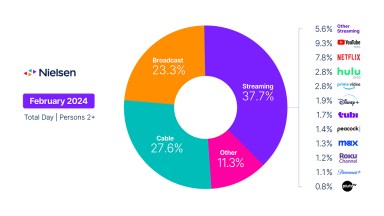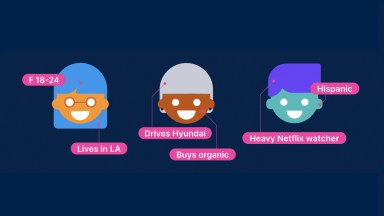
Once the niche domain of select, pure-play streamers, streaming has matured into ubiquity by meeting a critical audience need: choice.
Teeming with an array of live, on-demand and ad-supported options to complement traditional subscription options, streaming has transformed television viewing light years beyond its origins as an online replacement for physical movie rentals. And audiences have followed. In September, streaming—in all of its flavors—accounted for 36.9% of total TV usage, a new high water mark and up from 27.7% a year ago1.
Perhaps more important, however, is the blurring of the lines between different media offerings, amplifying the need for comparable measurement even more. YouTube, for example, has historically existed largely in the social media realm, providing individual content creators a platform to upload and share their own video content. But with its existing footprint and the ongoing adoption of YouTube TV, YouTube is steadily growing as both a video sharing platform and virtual multichannel video programming distributor (vMVPD). In September 2022, YouTube (including YouTube TV) accounted for 8% of total TV usage1.
To keep pace with audiences, advertisers are pivoting. Market research company Insider Intelligence forecasts that U.S. connected TV (CTV) spending will total $18.9 billion this year, with one-third being spent during the annual TV upfronts. And in contrast to the early days of streaming, ad-supported options—from pure-play streamers, traditional media companies and platforms like YouTube—are blossoming. In September 2022, for example, linear streaming from MVPD apps and vMVPDs accounted for 14.5% of all streaming1.
The growth of linear streaming speaks to how varied options have become, accompanied by an assortment of nuanced acronyms to boot (e.g., FAST, AVOD, vMVPD, OTT). But the alphabet soup is far less important than the aggregate impact that streaming is having on audiences and the content that’s resonating with them.
That’s where the appeal is for advertisers—reaching audiences that aren’t just watching traditional, linear television. While there is no denying the mass reach of traditional television, it’s clear that CTV is now a viable, scalable complement to it. Today, audiences use a range of devices interchangeably to tap into an ever-growing range of platforms, services and experiences.
In first-quarter 2022, for example, U.S. adults spent nearly as much time on TV-connected devices as on their mobile devices, both now far eclipsing the time they spend on their computers2.
As video advertising fragments to follow consumption, marketers need a reliable view into each touchpoint as well as an understanding of how each disparate piece ladders into complete consumer journeys—all while ensuring that individual people aren’t being measured multiple times. And because the lines between linear and digital continue to blur, measurement should no longer be specific to linear or digital. It should be continuous, automatic and comparable.
The good news is that it can be. Marketers no longer need to enable or tag individual campaigns—or rely on point-in-time metrics. They can simply “turn measurement on.” Continuous, “always on” measurement is a major comparability advancement, as it provides advertisers and agencies the ability to assess cross-media campaign performance on an even playing field. Continuous measurement also provides increased impression data, facilitating easier reach and frequency management, as well as the ability to make adjustments while campaigns are still in market.
The influx of ad-supported services and ad-available options within multi-tier platforms highlights the clear need for comparable, deduplicated campaign measurement across the digital landscape. Our YouTube example from above presents a relevant and real-time use case, especially as it has grown its share of total TV usage nearly 40% on a year-over-year basis and claimed the largest percentage of TV usage among streaming providers in September1.
The upside in this case for advertisers and agencies is that YouTube has already enabled the “always on” function of Nielsen’s Digital Ad Ratings, which means that advertisers and agencies simply need to enable the functionality for their YouTube campaigns to begin benefiting from true cross-channel comparability within one of the market’s leading and largest ad-supported platforms.
Transformative change requires precision, attention to market needs and a focus on the future. And in today’s media landscape, measurement that is comparable and deduplicated across platforms and devices is paramount. It’s also reflective of a future state, where the focus is on the audience.
Notes
- The Gauge, September 2022 usage data
- Nielsen Total Media Fusion



